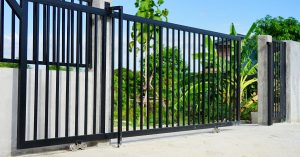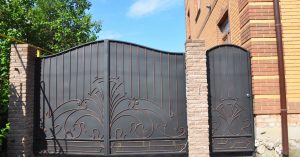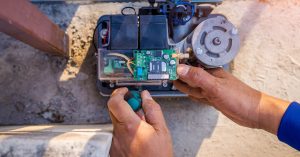Gate Commissioning
~
HSE Inspector Julian Franklin used the phrase “wholly avoidable” to describe the death of a six-year-old boy. It was a tragedy that could have been prevented if the gate had undergone a thorough commissioning process.
The company responsible for the gate was convicted under Health and Safety legislation. Gaps in the commissioning process led to the gate being handed over to the building occupier in a dangerous state. This incident highlights the dangers of our industry to the young and unsuspecting. Over the past three years, I have released blogs, articles, and videos on this topic.
“The Health and Safety Executive (HSE) will not hesitate to take appropriate enforcement action against those who disregard the law, regardless of the circumstances. The death of a young child cannot be the price of profit, incompetence, or carelessness.
In a case heard in a Leeds court in October 2015, a gate in an underground car park was manufactured and fitted with no end-stop to the track. As a result, the gate was pushed beyond the retaining mechanism and fell over, fatally crushing the child.
Even more shocking is that in the six years since the gate was installed, no one involved in commissioning or maintaining the gate at that time had noticed the defect!”
I understand these blogs can be challenging to read, especially if you are unfamiliar with the legislation and guidance surrounding powered gates. However, having a good understanding of these details is crucial if you have powered gates, as it can help you understand your responsibilities and ultimately save lives.
Powered Gates; Responsibilities
HSE Quote: “If competent contractors advise that the equipment is unsafe, prompt action should be taken to ensure the safety of everyone”.
The HSE provides good insight into powered gates (Roller Shutters, Automated Gates). I’ve taken some pertinent text from the HSE website further down the page, plus a link for those needing more information.
Roller Shutters and Automated Gate safety looks at how the individual parts create an installed product and how these parts work together in their designated function – Risk Assessment. In addition, how, over time, what action is taken to maintain the integrity of those components and the safety they provide when in use under various circumstances
Shutters and gates must always respond safely when being used. The design must account for “foreseeable interactions” going beyond everyday use, such as children playing with them, normal wear and tear, and adverse environmental influences, especially wind, rain, snow, and debris, that can impact function.
Those assessing, inspecting, checking, maintaining and repairing powered gates as part of a work activity have duties for safety under Section 3 of the Health & Safety at Work Act 1974. Essentially, they should not put others (including the public) at risk. For example, the gate must be left safe after maintenance or repair work.
Anyone working on powered gates should be competent (e.g., have appropriate mechanical, electrical, hydraulic, or pneumatic knowledge and be able to verify and test both parts and the final product). Specialist equipment may be needed, e.g., to test force limitation values.
Servicing, repair, and testing records may help demonstrate what has been done and how the gate is left safe. They could also be helpful as a benchmark for subsequent safety checks. Ideally, access to exact settings (e.g. force limitation) should be kept secure from interference. The user/occupier should be made aware of the significance of these safety settings. Users/owners should be made aware of the need for periodic checks to ensure safety (although there is no requirement for checks or maintenance of domestic private gates under health and safety law, they are recommended for protection).
Significant modifications to an existing powered gate may result in the gate being re-CE marked as the gate is, in effect, a ‘new’ machine. The same may also apply where CE-marked gate kits are modified on installation or installed in ways not intended by the kit manufacturer. In these cases, the person making the changes will be deemed the manufacturer (‘Responsible Person’). However, simple servicing and straightforward parts replacement will not require re-CE marking.
Landlords or those responsible for powered gates as part of their work activity (e.g., Managing Agents) have duties under Section 3 of the Health & Safety at Work Act 1974 for the safety of people (including the public) they do not employ.
They are expected to maintain standards of safety for construction, inspection, and maintenance similar to those of employers under the Workplace (Health, Safety and Welfare) Regulations 1992.



